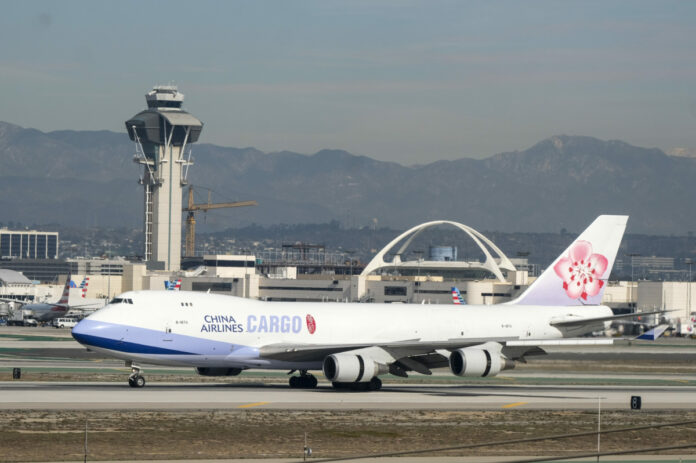Total passenger traffic at the four airports serving Los Angeles County has finally neared 90% recovery to pre-pandemic levels, led by strong growth in international passengers coming through Los Angeles International Airport, according to July figures from the airports’ governing authorities.
Nearly 8.8 million passengers went through the gates at LAX, Ontario International, Hollywood-Burbank and Long Beach airports in July, up 13.5% from the same month a year ago and only 10.8% short of pre-pandemic July 2019.
That represents the best showing in passenger tallies since the pandemic began, with the strongest year-over-year growth – 15% – occurring at LAX. That growth was buoyed by a 24% increase in international passengers from last year as the lifting of pandemic travel restrictions ushered in a global boom in international air travel.
“We reached a major milestone in June and July when our international passenger traffic surpassed 2 million guests each month,” said Justin Erbacci, the exiting chief executive of Los Angeles World Airports, the city agency that runs LAX.
According to a statement late last week from Los Angeles Mayor Karen Bass, Erbacci is stepping down from his post effective Oct. 6 to become chief executive of the airports division of NEOM, a massive new city being planned in northwest Saudi Arabia by the Saudi royal family. Board of Airport Commissioners member Beatrice Hsu will be stepping in as interim chief executive.
The news has been somewhat less favorable on the domestic front at LAX, where passenger tallies were up only 12% in July from a year ago. In order to avoid a repeat of delays and cancellations that plagued the 2022 summer season, many airlines scaled back planned flight additions this summer, Erbacci previously told the Business Journal.
As a result, domestic passenger counts at LAX have registered only a slight improvement when measured against pre-pandemic totals, with July’s total of about 5 million still 15% below the same month four years ago.
The picture at the three regional airports was mixed, with Ontario International continuing its strong recovery, followed by Long Beach. But Hollywood-Burbank Airport’s passenger counts were down slightly in July from both last year and 2019.
Ontario International was the first local airport to recover fully from the pandemic last year, and since then passenger counts have continued to accelerate. The 582,000 passengers that went through that airport in July was up 12% from last year and 18% from pre-pandemic 2019.
“The recent traveler data is stunning to say the least and reflects the strong sense of confidence among our airline partners and customers,” said Atif Elkadi, chief executive of the Ontario International Airport Authority. “While other airports in the region might struggle to regain their position in the market, we at Ontario International continue to deliver a world-class, hassle-free experience to travelers both living in and visiting the fast-growing Inland Empire, and the air travel market is responding positively.”
Long Beach Airport has experienced a bit more of a roller-coaster ride this year in terms of passenger counts, though July was definitely on the upswing. Roughly 341,000 people went through the gates at that municipal airport in July, up 11% from the same month last year and nearly 7% from pre-pandemic July 2019.
“The summer travel season has been hot at Long Beach Airport,” said Airport Director Cynthia Guidry. “July was our busiest month so far this year and our biggest increase in passenger traffic since the pandemic, with more and more travelers choosing to fly out of our convenient airport.”
On the flip side, July was a somewhat weak month for passenger travel at Hollywood-Burbank. The total of 533,000 passengers was down more than 2.5% from July of last year and down 1.6% from the same month in pre-pandemic 2019.
Cargo woes
While passenger tallies were generally taking off in July at the four airports serving Los Angeles County, cargo tonnage continued to plunge, with the cumulative total sliding below pre-pandemic 2019 levels.
The four airports combined handled 258,000 metric tons in July, down nearly 14% from last year and 2% from the same month in 2019.
Los Angeles International and Ontario International airports together handle roughly 98% of the cargo passing through the four airports.
At LAX, cargo tonnage dropped nearly 13% in July to 198,000 compared to a year ago, though that tally was nearly 3% higher than the same month in 2019.
That’s a much different picture than two years ago, when surges in pandemic-related deliveries and cargo diversions from the clogged ports of Los Angeles and Long Beach pushed the total tonnage at LAX nearly 30% above pre-pandemic July 2019.
“Our cargo volume is leveling off at numbers similar to 2019, after we saw tremendous, temporary growth during the pandemic due to airlines repurposing passenger planes for cargo, challenges with seaports and the transport of (personal protective equipment) products,” Erbacci said last month.
At Ontario, the cargo trend was entirely down in July, dropping 17% to 56,000 metric tons compared to the same month last year and falling more than 12% from 2019.

